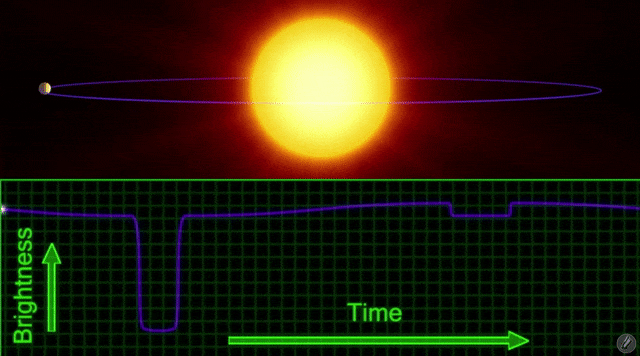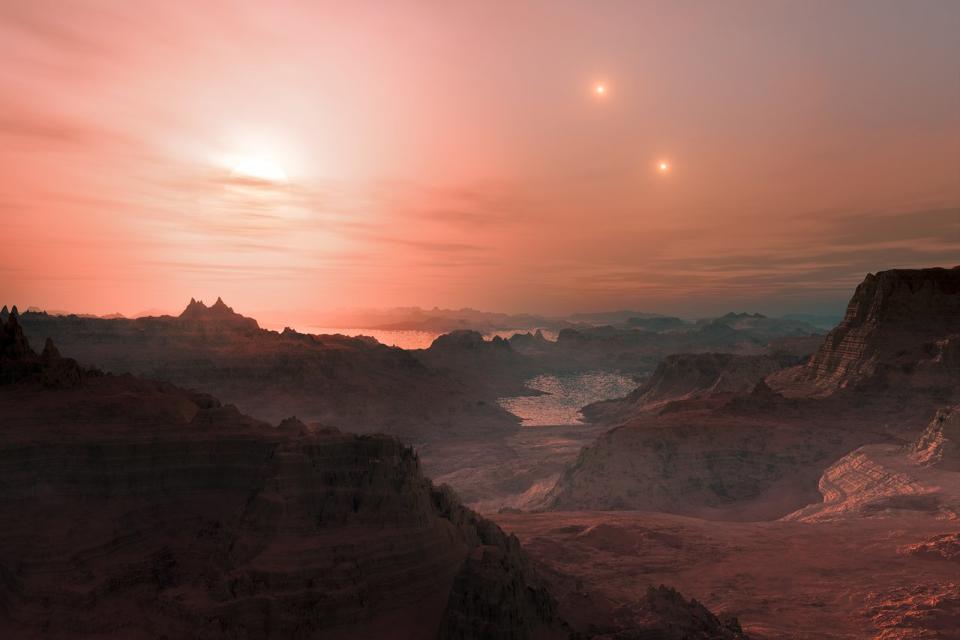E.T.'s Home Star Probably Looks Nothing Like the Sun

There's a potentially Earth-like planet around the closest star to Earth-that's the space headline that captured the world's imagination this summer. But here's something that was easy to forget in all that furor over Proxima Centauri. Our neighboring star doesn't look anything like the Sun.
We humans have known only one life-sustaining planet in the universe: a green-and-blue globe called Earth. So perhaps we can be forgiven for thinking the ideal ingredients for creating life must resemble what we se here: a bunch of planets around a medium-sized yellow star.
Mind-expanding missions like the Kepler Space Observatory, however, have scientists questioning whether a solar system like ours really is the perfect place to hunt for new Earths and the possibility of life beyond our planet. Lately, astronomers have been taking a closer look at red dwarfs-stars with low mass, low temperatures, and slow rates of fusion.These stars don't look much like our life-giving Sun, but they make up almost 70 percent of the observable stars in the sky and could survive for trillions of years-far longer than our star.
If we're going to find life beyond our solar system, many scientists believe it will be orbiting a red dwarf. Here's why.
The Alien Worlds of Red Dwarfs
In the past, planet-hunters thought the odds of finding potentially habitable worlds around red dwarfs were quite low. Because of their low mass and temperature, red dwarfs emit just 3 percent as much light as our sun. For an orbiting planet not to freeze into an uninhabitable iceball, it would need to be as close to the star as Mercury is to our Sun. Unfortunately, being so close to a star means the planets probably would be tidally locked, where one side is constantly facing the star and the other side always faces away. Not ideal conditions for creating life.
Red dwarfs are also far less stable compared to larger stars, undergoing sudden rises and drops in the amount of light and heat they emit. This creates big variations in temperature, adding yet another challenge for budding life.
If we're going to find life beyond our solar system, it will likely be orbiting a red dwarf.
It's not all bad news, though. Red dwarfs have a considerable advantage over other stars in their incredible lifespans. Our Sun has been around for 4.57 billion years, yet humanity has existed for just 200,000 years. Life takes a long time, and complex life even more so.
Time is one thing red dwarfs have plenty of-they can exist for trillions of years because of their low mass and slow rate of nuclear fusion. Since they're also so common in our cosmos, the odds of finding planets within that habitable Golidlocks zone is statistically high. For astronomers, the pros are starting to outweigh the cons.
The Case for Going Red
In 2005, astronomers from around the world converged on Mountain View, California, for a workshop sponsored by The Search for Extraterrestrial Intelligence (SETI) where scientists argued the case that red dwarf stars could be the best place to look for aliens. In the end, it comes down to sheer probability. Within 33 light years of Earth there were 240 known red dwarfs at the time, compared to just 21 stars like ours.
Although red dwarfs are hard to find because they're dim, once they're spotted it's much easier to see how many chunks of rock are in orbit. The so-called transit method of finding exoplanets, which the Kepler telescope used to great effect, relies on looking for changes in brightness caused by a planet passing in front of its star. It looks something like this:

Because planets orbiting a red dwarf are likely to hug their stars so tightly, the orbital period is often just a few days long, which makes for pretty good odds of seeing such a transit.
New Worlds Emerge
Since that SETI conference more than a decade ago, oodles of new planets orbiting red dwarfs have been discovered. Between 2005 and 2010, astronomers found six exoplanets orbiting Gliese 581, a red dwarf located about 20 light years from Earth. Two of these planets, Gliese 581-c and -d, lie on the inner and outer edge the star's habitable zone. Another exoplanet, Gliese 581-g, may also have an orbit fit for habitability (though its existence is still contested).
In 2012, the European Southern Observatory (ESO) published the results of a spectrographic survey that examined 102 red dwarf stars in the Milky Way over the course of six years. They found that red dwarf stars were more likely to have an Earth-like planet orbiting them than a gas giant. Two years later, another ESO study concluded that virtually all red dwarfs in the universe have at least one exoplanet orbiting them. At least a quarter of them have a super-Earth (a planet like ours but slightly bigger) orbiting within their habitable zones.
The drumbeat goes on. This past July, researchers from the Harvard Smithsonian Center for Astrophysics (CfA) released a study in which the team calculated the likelihood of Earth-like planets forming within our universe over cosmic timescales, starting with the first stars to form, billions of years ago, and continuing into the distant future. They determined that low-mass red dwarf stars would be more likely than giant stars to maintain a system of planets long enough for life to emerge, and that likelihood only increased with time.
"We considered the likelihood of 'life as we know it' to form between the appearance of the first stars and the death of the last stars," Professor Avi Loeb, a science professor at Harvard University and the lead author on the paper, told PM. " We found that the likelihood peaks in the distant future around low-mass stars, simply because these stars live much longer than the Sun."

Other discoveries made in the past five years have also bolstered the case for habitable planets around red dwarf stars with exoplanet candidates around Innes Star, Kepler 42, Gliese 832, Gliese 667, Gliese 3293, and most recently Proxima Centauri. All of these star systems are located relatively close to our own, though still impossibly out of reach with only today's space-faring technology.
In the coming years, as more exoplanet hunters like the James Webb Telescope and the Transiting Exoplanet Survey Satellite look to the sky, it's probable that scientists and astronomers will focus much of their efforts on nearby red dwarf stars.
"One of the great discoveries made in the past decade or so is that it seems like there are planets all over the place," TESS project scientist Stephen Rinehart told PM, "even around these small stars so different from our own."
You Might Also Like

